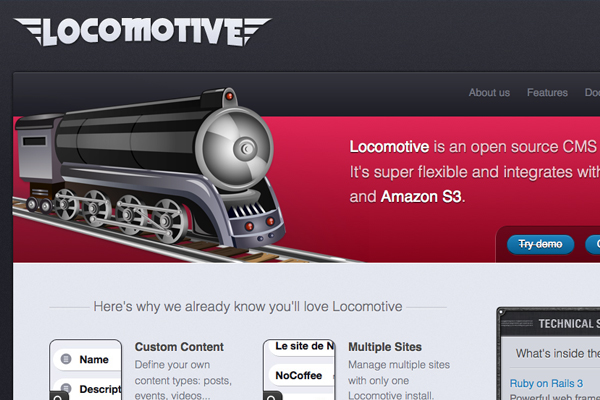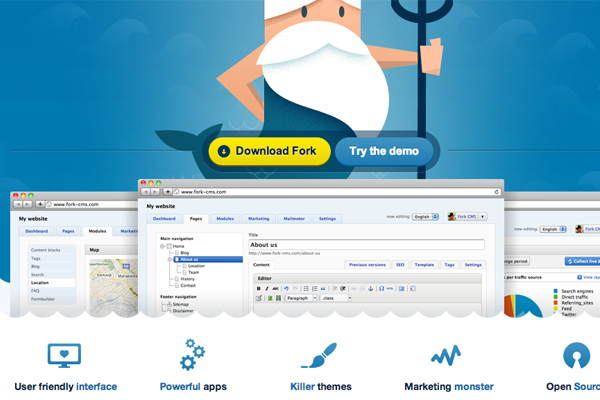Web designers are not often concerned with the performance of their website. This is often left up to the developer(s) who need to cater both frontend and backend codes. Considering how popular the open source movement has become I wanted to delve a bit deeper into which solutions may provide the quickest user access. I have toyed around with many various CMS engines and there are plenty of ideas worth considering.
But we need to think about which CMS solutions will be most useful to people accessing your website around the world. Which systems are the most stable and easy to install, customize, then keep running for years. It is a heavy burden to manage websites. The job is not physically strenuous but there are many various aspects and problems to deal with.
WordPress
Anybody who has gotten familiar with PHP knows about WordPress as a blogging platform. Over the recent years it has transformed into a major content management system great for managing pages and other custom post types.
The reason WordPress is such a great choice for new launches is because of the vast library of plugins for managing your site. There are free solutions for caching, comments management, user management, contact forms, and practically anything you could need. This is the main reason so many people rely on WordPress and how the system can stay online for years without much trouble.
LocomotiveCMS
I have not personally used Locomotive CMS but have heard great things about the product. It is an open source CMS built using Ruby on Rails for a production environment. Any developer who has toyed around in RoR knows this is a quick and efficient language. The ability to implement new custom features will come at an easier burden than PHP/MySQL developers.
There are other similar libraries running over Rails but I have yet to read into them much. Refinery is another solution but I have never used this nor read much into the system. So it is difficult to compare these two CMS options. However Locomotive is definitely a secure choice in my book. Take a look at some of their features and see how it would stack up to a WordPress installation.
Some people really prefer the idea of Rails because it has a newer code base. This means bugs and annoyances which plague PHP5 are not so common. The developers who started this project were aiming for a goal and pushed towards the end game of stability and reliable service. Even if you are not familiar with RoR Locomotive is a great way to get started practicing the language, installing Rails software, and managing a CMS on the backend.
Fork CMS
Fork is another PHP/MySQL alternative for webmasters building their own content from scratch. The reason I would suggest Fork CMS along with WordPress is how the two systems are majorly different. If you visit the Fork homepage you will notice that the project is geared more towards an actual content management system. You can publish blog posts but these are not the main focus, and it is even easier to create your own post types and publications.
If any developer has used WordPress on the backend then it is worth a case study into Fork CMS. The script may only be installed on a root domain and you can’t use a sub-folder, which is a bit off-putting. However the internal admin panel and subsequent templates/modules system is incredible and worth some time for planning. Personally I would trust my websites to run on any of these 3 solutions. It all comes down to personal preference and what functionality you need for a website.
Guest Blogger profile
Writing and publishing articles related to web design, Internet trends, and new technologies. Mostly sharing exclusive ideas for website designers/developers. Check out more stuff at the website www.dslinternetproviders.com.


